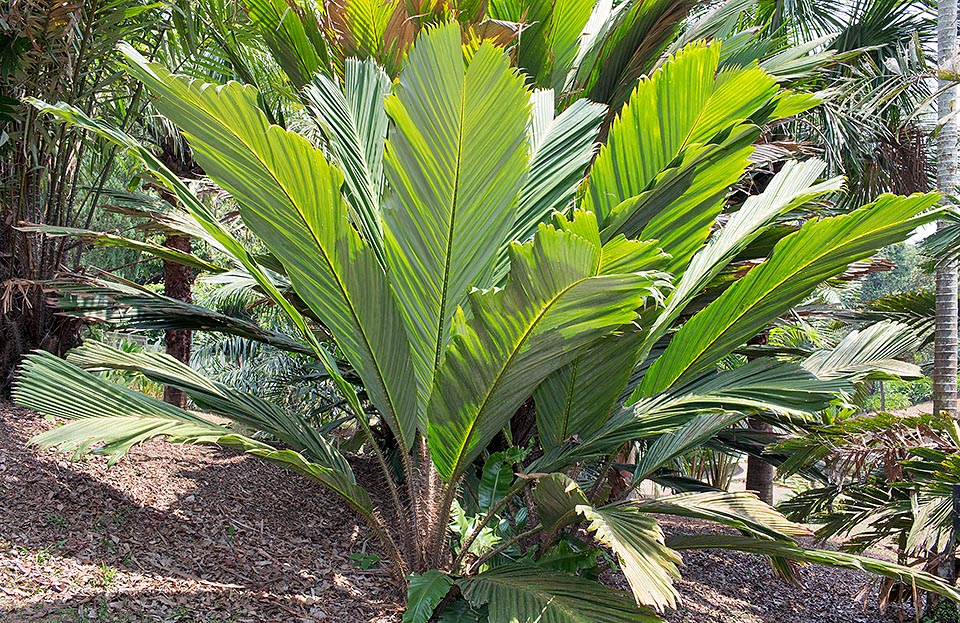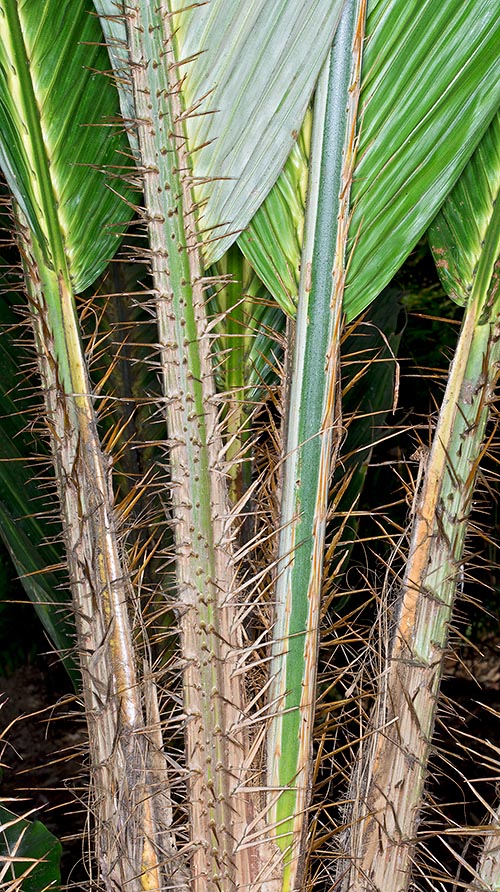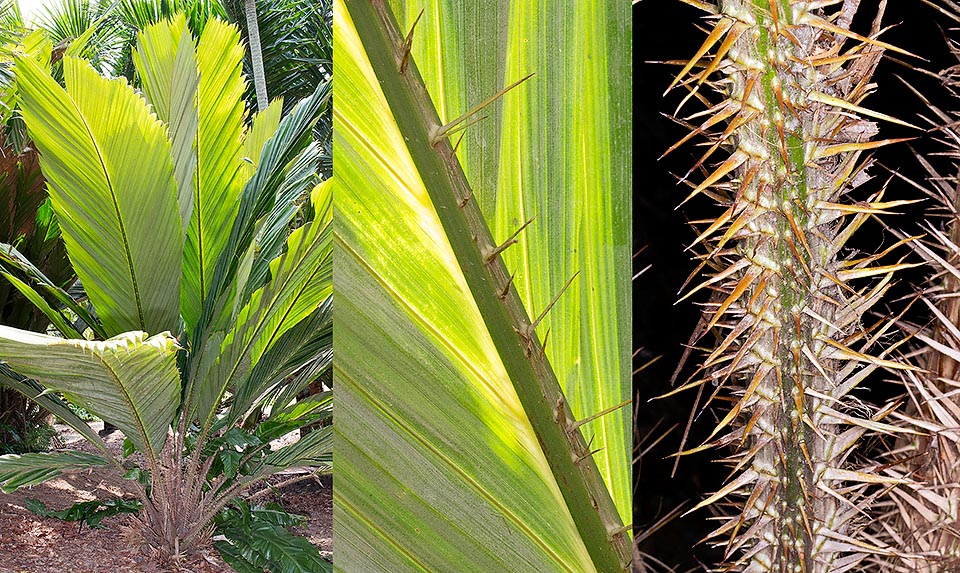Family : Arecaceae

Text © Pietro Puccio

English translation by Mario Beltramini

Native to Borneo, Salacca magnifica is an acaulous dioecious, cespitous species, with leaves on a 0,5-1,6 m petiole, undivided, plicate, with bifid apex, even 4 m long © Giuseppe Mazza

Young leaves with spines that deter the herbivores© Giuseppe Mazza
Common names: baroh, lium, remayong (Sarawak); selindung (Kalimantan).
The Salacca magnifica Mogea (1980) is an acaulous dioecious species, cespitous, with leaves, on a 0,5-1,6 m long petiole, undivided, plicate, obtriangular with toothed margins, in correspondence to the veins of the foliar segments merged together, and bifid apex, up to about 4 m long and 0,4-0,7 m broad, of intense glossy green colour above, silver grey below.
Foliar sheath, petiole and rachis are thickly armed with robust spines of various length, up to more than 6 cm, and bound towards different directions, of pale brown colour.
Inflorescences between the leaves, the male usually erect, with 2-3 orders of ramification, about 45 cm long, bearing numerous flowers arranged in couple and close, the female simple, initially erect, then curved in fruit, about 30 cm long, with several close flowers.
The fruits are pyriform of pinkish brown colour, about 5 cm long, covered by imbricate scales with pointed apex and retroflexed, containing 1-3 seeds; the cream white pulp is edible with a sweet taste. The germination is adjacent and the first leaf is bifid.
It reproduces by seed in organic loam with addition of coarse siliceous sand or agri perlite per a 30%, for a best drainage, maintained humid at the temperature of 26-28 °C, with fairly long germination times, from some months to one year; it propagates also by division, albeit with difficulty due to the presence of the spines.
Specific name absolutely right for this palm with the undivided leaves, the largest and among the most ornamental of the genus, rare in cultivation, would deserve a better diffusion, also keeping in mind the spines that limit its collocation to the large gardens and far away from the passing places.
Markedly tropical in its exigencies, requiring high and constant temperatures and ambient humidity, can be tried its cultivation in the subtropical climate zones where temperatures under the 10 °C are short lasting exceptions.
It can grow in full sun in presence of high humidity in the air and the soil, but usually prefers a partly shaded position; requires draining soils rich of organic substance, acidic or neutral, maintained constantly humid.
Useful are the fertilizations with balanced products with microelements in the form of chelates.

Foliar sheath, petiole and rachis are densely armed of strong spines of various length, 6 cm and more, facing various directions, of pale brown colour © Giuseppe Mazza
→ For general notions about ARECACEAE please click here.
